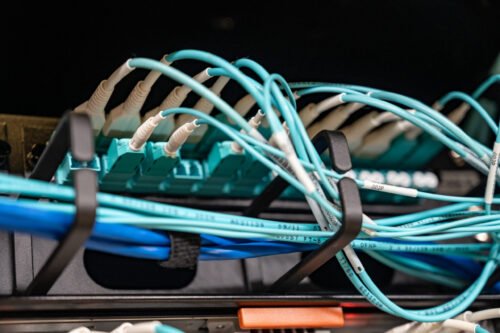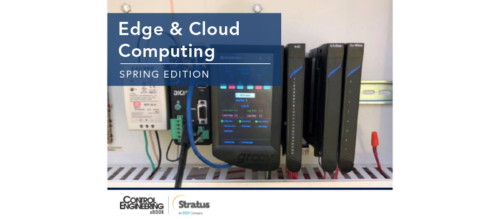More answers on bridging the gap from edge to cloud MES to make automation more effective
Industrial hardware and software experts answered more questions about how edge computing helps integrate human-machine interface and supervisory control and data acquisition (HMI/SCADA) software, manufacturing execution system (MES) software, enterprise software and industrial cloud-based applications, after an Oct. 5 Control Engineering webcast. Link to the webcast and related article.
Learning Objectives
- Explore how a Control Engineering webcast on industrial edge computing and MES included many audience questions.
- Review additional audience questions related to MES, edge computing and related topics and expert answers from webcast presenters.
- Learn more on MES and edge computing by seeing the related webcast, article and other resources.
Edge and cloud MES insights
- Control Engineering webcast on industrial edge computing and MES included many audience questions.
- Experts from the webcast answered additional audience questions related to MES, edge computing and related topics
- Link to the related edge computing and MES webcast, article and other resources.
The audience attending the webcast “Bridging the Gap: Edge to Cloud MES” had more questions on the topic, and the experts from the webcast provided additional answers below, after the question and answer session during the Oct. 5 presentation (available archived for a year).
Jason Andersen is vice president, business line management, Stratus, and Ron Harrison is president and founder, Conperio Technology Solutions. Additional information on MES and edge computing is available in a related article, “Learn about bridging the gap from edge to cloud MES to make automation more effective.”

Jason Andersen, vice president, business line management, Stratus and Ron Harrison, president and founder, Conperio Technology Solutions, explain four ways a modern MES makes automation more effective, in an Oct. 5 Control Engineering webcast, “Bridging the Gap: Edge to Cloud MES,” archived for a year. Courtesy: Stratus, Conperio Technology Solutions
See more questions for and answers from Andersen and Harrison, below.
Where do I begin with an industrial MES project?
Question: How do we get started with a modern MES project? What do I need to do so I will not fail?
Harrison: I cannot state strongly enough about communicating clear business requirements. An MES system will encompass many different areas of the business. So, representation from quality, engineering, production, maintenance and information technology (IT) areas would be extremely beneficial. As an example, if we put a representative from each area in a room and ask for requirements to build a SCADA system, we will get pretty much the same answer. They will all know what we need to collect, how we need to build it, and how we need to monitor it. Now if we go to these same people and say, we are going to put in an MES system, we are going to get all different answers. Why? Again, an MES system is so encompassing that it will mean something different to each of those areas of the business. So, getting clear business requirements is a must.
What are common industrial MES features and functions?
Question: What are the features and capabilities that customers should look for in their MES solution?
Harrison: A cloud-based MES system is designed for high availability and reliability. They can be much more cost-effective and easier to maintain than an on-premises system. Cloud-based MES systems are deployed more rapidly and will reduce the burden on internal IT teams while the system stays up to date. For Conperio, we will configure the MES applications versus building hard-coded individual silos of code that are difficult to maintain, support and scale.
How do edge computing platforms help industrial MES and cloud-based MES now and in the future?
Question: What are the most important Stratus features that make it appropriate to use in MES?
Andersen: Stratus systems provide an easy-to-deploy and reliable infrastructure for MES and other applications deployed at the edge. Our systems are redundant so there is no data loss in the event of downtime and we also can provide remote monitoring to enable a zero-touch experience.
Question: What is the role of edge computing in cloud-based MES?
Andersen: Edge computing can be deployed to help filter and parse data going into an MES system which saves costs.
Harrison: Edge computing can have several roles with a cloud-based MES. First and foremost, a cloud MES will always have a local component that requires local resources. The data collected from machinery and devices will communicate with an edge device, which also then communicates with the cloud-based MES. Security is another role that edge computing can greatly assist with on a cloud-based MES. By only exposing the edge device, our control systems are much more secure.
Question: Can you provide insights into the future trends of MES in manufacturing?
Harrison: I think you will see more cloud-based initiatives with MES. I also believe that companies that do not spend the time, effort and money to build this digitalization strategy will be left behind within a few years.
MES cybersecurity explained
Question: What are the cybersecurity considerations for an MES system? How can edge computing help?
Harrison: The MES should be secure to protect sensitive data. We have a lot of information in these systems. This is how we build our products, this is the steps that each product takes, this is, if in a process manufacturing environment, we have our recipes. So, we need to be aware of cybersecurity events and protect our assets.
Andersen: Stratus Edge Computing platforms have built-in features that help in protecting from cyberattacks like host-based firewalls, restricted USB ports, with secure communication protocols and trusted boots. Also, Stratus works with cybersecurity partners like Claroty to deliver solutions that protect customers from cyberattacks.
Question: What’s your level of concern about data security when considering an MES system?
Harrison: That depends on several factors. I am less concerned with a cloud-based MES than one designed on-premises.
Andersen: The main concerns right now are about education and mitigation of human errors which are often the leading cause of cybersecurity events.
Question: How do you address the security risk of enterprise resource planning (ERP) data going through MES to Level 2 to run batches, start production runs, changes grades?
Harrison: When Level 4 can drive motors and valves, this is an important concern. That is not how this is intended to work. MES systems could in fact release to the floor scheduled production runs, but those would be started, stopped, etc., by the Level 2 systems. ERP would never be designed to perform those functions.
How is MES useful for regulatory compliance, quality initiatives and standardization?
Question: How does an MES contribute to regulatory compliance and quality assurance?
Harrison: Data is captured more frequently and at each step in the process. This will assist in the reporting that must be followed for regulatory agencies and QA initiatives alike.
Question: How should an MES interact with other systems in a manufacturing environment?
Harrison: MES could be the central point of truth as it is integrated with the other components mentioned. There are so many components of the MES that ERP and HMI/SCADA systems do not currently handle.
Question: Should a manufacturer go with one middleware to integrate everything or have multiple middleware packages depending on what is being integrated?
Harrison: That depends. Some may choose to split out important functions in this middle layer into different types of systems. A good example would be splitting the MES and quality management systems separately.
Question: Can you comment on the importance of defining standard equipment and product data models at the edge during design phase for multi-line and multi-site MES development and deployment?
Harrison: Standardization can help for certain. However, in today’s world, we have the ability to integrate with multiple differing systems. The standardization could assist with more rapid deployments and scalability for multiple plant operations.
What about MES scalability and implementation timelines for industrial applications?
Question: Can you explain the scalability of an MES solution?
Harrison: The MES system should be scalable to accommodate future growth. We saw this on full display during the pandemic. Manufacturers were not able to scale their operations to accommodate higher demands. A modern MES will accommodate the ability for manufacturers to scale accordingly.
Question: What is the typical implementation timeline for an MES?
Harrison: This varies wildly depending on requirements. A simple production monitoring implementation that would provide overall equipment effectiveness (OEE) and downtime can be implemented in as little as two weeks up to eight weeks or more.
How can MES help industrial digital transformation and automation integration?
Question: Do you foresee MES playing a critical role in digital transformation strategies?
Harrison: MES will be one of the main drivers of digital transformation efforts.
Andersen: MES is a critical part of digital transformation as automation becomes increasingly data-centric. This approach will lead to new applications, tasks and job roles. MES effectively drives the coordination and integration of the data into these new practices.
Question: How does MES impact a structure that already incorporates ERP, data historian and automated plant floor (HMI/SCADA)? What would the MES relationship look like?
Harrison: MES could be the central point of truth as it is integrated with the other components mentioned. There are so many components of the MES that ERP and HMI/SCADA systems do not currently handle.
Andersen: Ultimately, at the edge, these applications serve different needs which is why you need an infrastructure that can scale to manage these applications efficiently (via virtualization for instance) as well as enable the right data to pass between the systems as designed.
What is unified names space and how can it help MES?
Question: I hear a lot about unified name space (UNS). Is this a real thing between MES and SCADA layer?
Harrison: UNS very well could be the next major impactful technology in this space. It enables all devices and systems to collect data in an unstructured way and gives the ability to bring it all back together again.
Question: Learn more about MES and edge computing
Q: If I want to learn more about what was talked about today, where do I start for the basics?
Harrison: A good start would be: “Plex MES for dummies” to cover the basics.
Andersen: Please see: “Modern edge computing accelerates smart manufacturing initiatives for discrete manufacturers.”
Edited by Mark T. Hoske, content manager, Control Engineering, CFE Media and Technology, mhoske@cfemedia.com.
KEYWORDS: Manufacturing execution systems, MES, edge computing
CONSIDER THIS
How can MES and edge computing better integrate existing systems so smarter decisions can be made more quickly?
ONLINE
Learn more in the webcast: “Bridging the Gap: Edge to Cloud MES.”
https://www.controleng.com/webcasts/bridging-the-gap-edge-to-cloud-mes/
Do you have experience and expertise with the topics mentioned in this content? You should consider contributing to our CFE Media editorial team and getting the recognition you and your company deserve. Click here to start this process.






